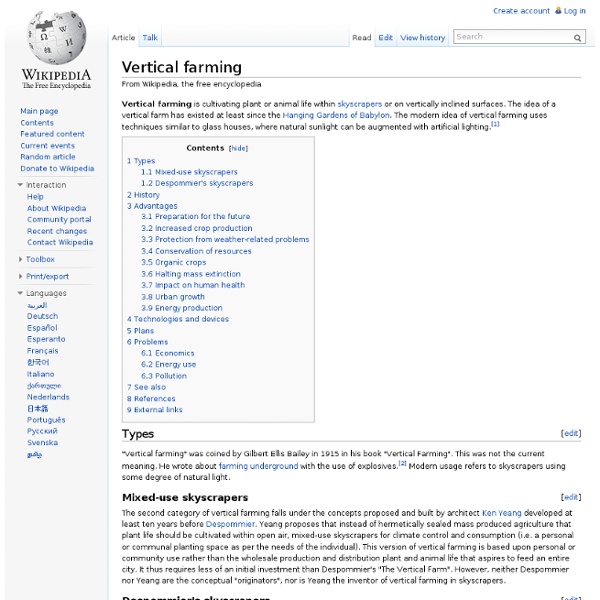Vertical farming

Vertical Gardening Ideas: Tube Planters - Gardening Gone Wild
I was transformed into a lover and student of vertical gardening after seeing Patrick Blanc’s vertical wall designs years ago in a magazine. I’ve written about vertical gardening on GGW over the past few years. Since then, the field has continued to grow at a quick pace. The horticultural industry is focusing more and more on green roofs and vertical gardening, realizing that these two forms of gardening are not only environmentally beneficial but can help expand peoples’ horizons of how to create a garden when dealing with an unconventional space. In he 1980s, Pat McWhinney noticed that many rock and waterfall type projects were lacking plant life around the rock formations. Consequently, he created a unique plant system called Tube Planters. Tube planters are made of an industrial cloth: Patrick has them sown up by a seamstress into circular tubes and lengths of varying dimensions. Five tube planters secured to a latticed screen, ready to be planted.
Public Works | Infrastructure services for state and local government agencies
Media Ownership Regulation in Australia
Current Issues Media Ownership Regulation in Australia E-Brief: Online Only issued 22 October 2001; updated 26 March 2002; updated 16 June 2003; updated 30 May 2006. Dr John Gardiner-Garden, Analysis and Policy, Social Policy SectionJonathan Chowns, Analysis and Policy, Economics, Commerce and Industrial Relations Section Introduction Although Australia's media ownership laws have remained unchanged for over a decade, debate on the desirability of reform has continued unabated. The major effect of the laws is to prevent the common ownership of newspapers, television and radio broadcasting licences that serve the same region. This e-brief provides background on the issue, together with links to relevant sites and documents. Back to top The Constitutional Position The Commonwealth's legislative controls on media ownership can be divided into two broad categories: specific controls relating to broadcasting contained in the Broadcasting Services Act 1992. Current Media Ownership Controls Radio
Related:
Related:



